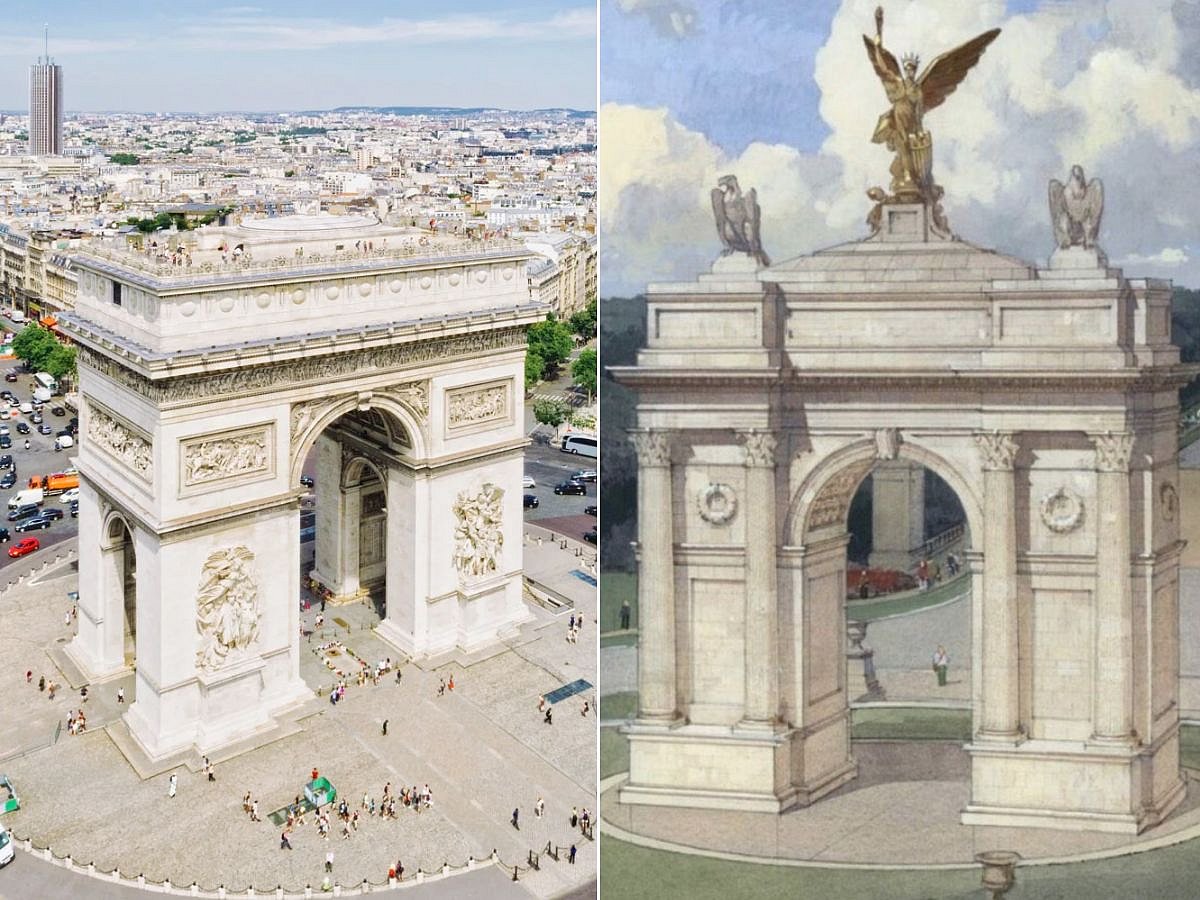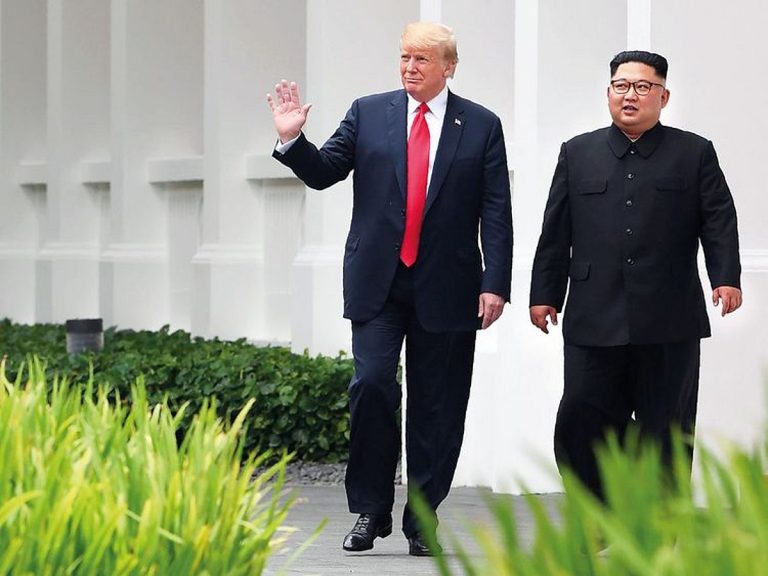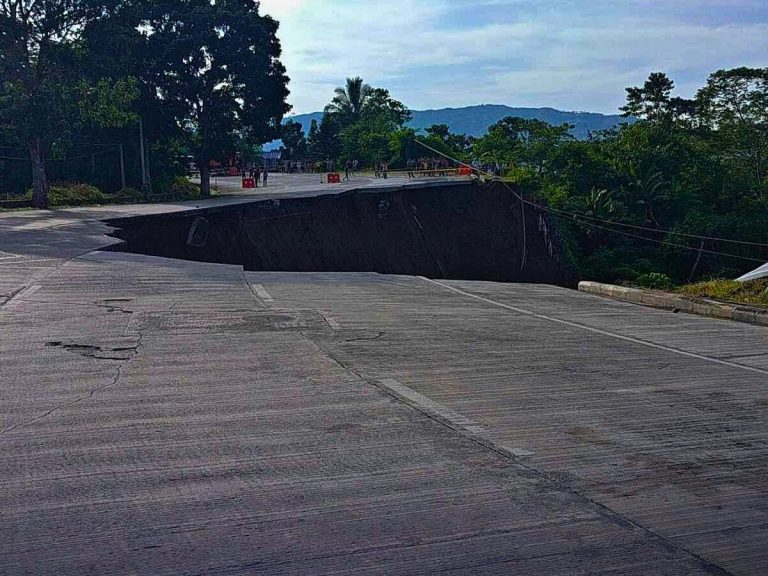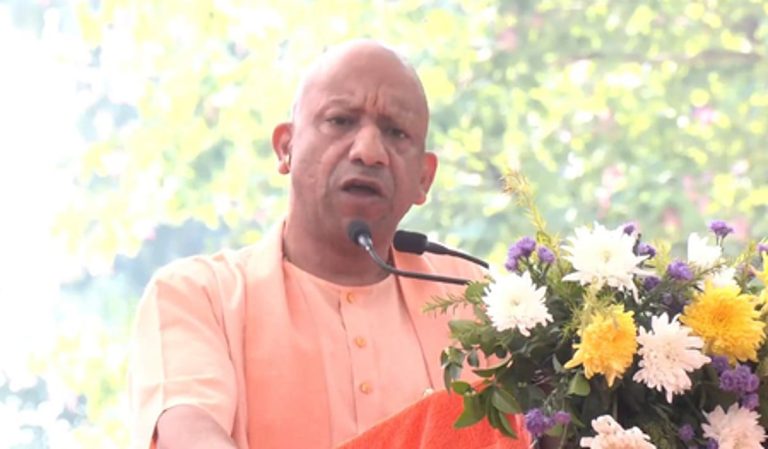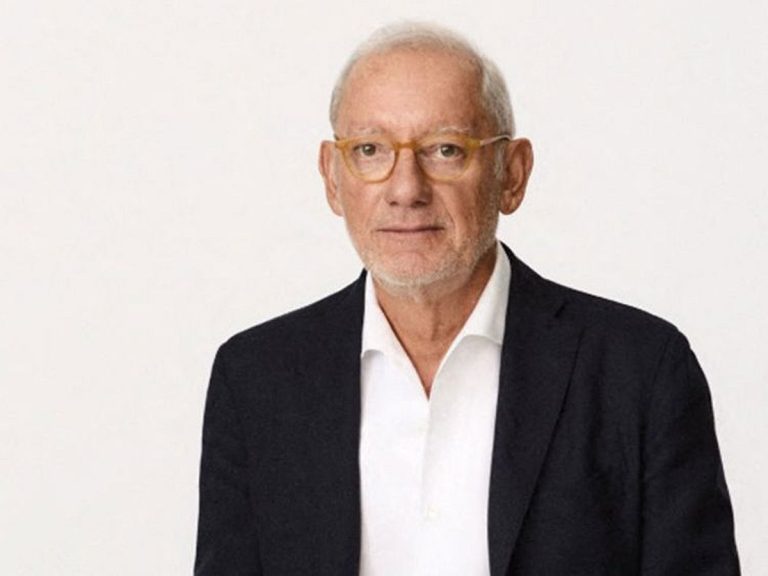Trump Proposes Arc de Trump Near Arlington Cemetery
In a bold move reminiscent of his larger-than-life persona, former President Donald Trump has unveiled plans for a monumental structure known as the “Arc de Trump.” This ambitious project aims to create a striking arch near Arlington National Cemetery, directly across the Potomac River from the Lincoln Memorial, celebrating America’s 250th anniversary in 2026.
Vision for the Arc de Trump
The proposed arch, also referred to as the “Independence Arch,” is designed by architect Nicolas Charbon of Harrison Design. Trump showcased models of the structure at a recent fundraising event, highlighting a large version that features intricate details, including a winged golden angel holding a torch and flanked by two white eagles. This design choice reflects a neoclassical style, reminiscent of the ideals embraced by the nation’s founding fathers, symbolizing strength, unity, and national pride.
Trump’s vision for the arch is to create a grand entrance for visitors crossing from Virginia into Washington, D.C., via the Memorial Bridge. He humorously noted that the arch is meant to honor himself, indicating a personal connection to the project. The arch is intended to serve as a landmark that bridges history, politics, and architecture, much like its Parisian counterpart, the Arc de Triomphe.
Historical Context and Symbolism
The Arc de Triomphe in Paris, completed in the early 19th century, commemorates French military victories and honors fallen soldiers. It has become a key symbol of national identity in France. In contrast, the Arc de Trump aims to mark a significant milestone in American history—the semiquincentennial—while also establishing a personal legacy for Trump.
The proposed location of the Arc de Trump is significant, as it would stand at a ceremonial gateway between Virginia and D.C., making it a prominent feature in the landscape. While the project awaits formal approvals from various entities, including the U.S. Commission of Fine Arts, Trump’s unveiling of the design indicates a strong desire to leave a lasting architectural imprint on the capital.
The Future of the Arc de Trump
As discussions around the arch continue, it remains uncertain whether it will reshape Washington’s monumental landscape in the same way the Arc de Triomphe has become iconic for France. The project is positioned to blend Trump’s presidential ambition with a historic commemoration, creating a structure that could serve as both a personal monument and a national symbol.
In addition to the Arc de Trump, Trump is also pursuing a significant expansion of the White House ballroom, further emphasizing his commitment to leaving a mark on the nation’s capital. The combination of these projects reflects a unique blend of history, architecture, and Trump’s distinctive style, promising a grand new entrance to Washington, D.C.
FAQs
What is the purpose of the Arc de Trump?
The Arc de Trump is intended to celebrate America’s 250th anniversary and serve as a monumental entrance for visitors entering Washington, D.C., from Virginia.
Who designed the Arc de Trump?
The arch is designed by architect Nicolas Charbon of Harrison Design, who has incorporated neoclassical elements to reflect the ideals of the U.S. founding fathers.
What approvals are needed for the Arc de Trump project?
The project requires formal approvals from various entities, including the U.S. Commission of Fine Arts, before it can proceed.
Conclusion
The proposed Arc de Trump represents a significant architectural endeavor that intertwines personal ambition with national celebration. As plans develop and approvals are sought, the future of this monument remains to be seen, but it promises to add a new layer of grandeur to Washington, D.C.’s landscape.
The Arc de Trump, if realized, would join a series of monuments and memorials that reflect the nation’s history and values. The area surrounding Arlington National Cemetery is already rich with historical significance, housing numerous tributes to military service and sacrifice. This proposed structure could enhance the cultural landscape, inviting discussions about the role of monuments in contemporary society.
As the project progresses, it will likely attract both supporters and critics, sparking debates about its appropriateness and the implications of commemorating a living political figure. The outcome may influence future architectural endeavors in the capital, potentially setting precedents for how personal legacies are integrated into public spaces. The intersection of politics, history, and architecture will be closely monitored as the plans unfold.
Also Read:
New Arts Hub Launches at Mall of the Emirates

